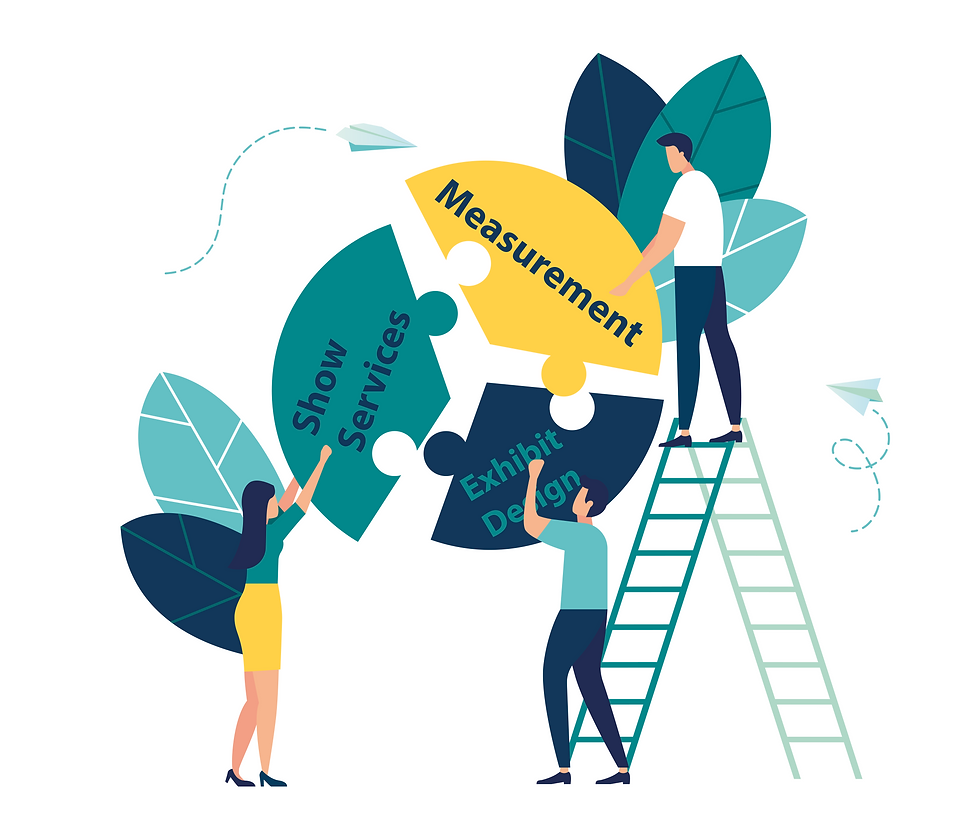4 Types of Trade Show Booths: Understanding the Engagement and Attraction Matrix
- fs-partners
- Nov 21, 2024
- 3 min read
Traditional ways of measuring booth success are no longer enough. Exhibitors now need a more holistic approach that goes beyond the number of lead scans, coffee cups served or swag given away. Focusing instead on how well a booth attracts and engages visitors provides clear insight into how a booth performed, what worked and what didn't and how performance aligned with strategic goals and objectives.
Enter the Engagement and Attraction Matrix. This powerful tool provides a holistic view of your booth’s effectiveness, allowing you to optimize your presence by categorizing booths into four distinct types.
What is the Engagement and Attraction Matrix?

The Engagement and Attraction Matrix visually represents booth performance based on two key factors:
Attraction: How well does the booth draw in attendees and convert them into qualified visitors through meaningful interactions?
Engagement: How effectively does your booth maintain visitor interest and facilitate interactions with multiple display areas?
By assessing these factors, you can classify your booth into one of four categories: High Performing, Attractive, Captive or Low-Performing. Each category offers unique insights and opportunities for improvement and must be evaluated against the goals and objectives of the activation at the show.
Type 1: The High Performing Booth
The gold standard – High Performing booths captivate visitors from a distance, draw them in and keep them engaged. They are visually appealing, feature hands-on demos, and foster lasting impressions through memorable interactions. These booths often see high conversion rates, long visitor journeys and extended dwell times.
Type 2: The Attractive Booth
Attractive booths excel at drawing visitors in but often lack the depth to sustain engagement. These booths might be visually compelling and have attention-grabbing elements like giveaways or fun, interactive displays. However, once visitors enter, they might find it challenging to navigate the space, connect with content or stay engaged with other displays.
Type 3: The Captive Booth
Captive Booths may not attract large crowds but they excel at engaging those who do visit. A booth whose performance landed them in this category had visitors who engaged at length with product demonstrations, spent more time exploring most or all of the booths displays and building meaningful connections with the staff.
Type 4: The Low Performing Booth
Low Performing Booths struggle with both attraction and engagement. They may suffer from poor exhibit hall positioning, ineffective booth design or other factors that lead to limited visitor interest and low foot traffic
Using Data to Optimize Your Booth Type
Each booth type provides clues to areas needing improvement, which can help you move up in the matrix. For instance, transitioning from a Low Performing to an Attractive Booth may involve strategies to enhance visibility, boost brand impact and increase walk-by traffic. This could mean rethinking the booth’s floor plan placement, adjusting the booth orientation or even overhauling the entire design. Using attendee engagement technology can guide these adjustments by offering insights into the visitor behavior and specific areas of improvement, allowing you to implement changes that will optimize performance over time.
Transforming Insights into Action
Understanding the four types of trade show booths - High Performing, Attractive, Captive and Low Performing - enables you to understand a simple view of the true performance of your booth as well as highlighting the areas of improvement to optimize your booth for a future activation.




Dans un cadre professionnel où il est mal vu de fumer, je cherchais un compromis pour couper le stress sans avoir recours au tabac. C’est là que j’ai testé la cigarette electronique sans nicotine https://www.vapeol.fr/495-cigarette-electronique-sans-nicotine, qui offre une gestuelle similaire sans odeur ni substance addictive. Après plusieurs jours d’usage, j’ai remarqué que cela m’aidait à gérer mes pauses sans ressentir de manque ou de nervosité. En plus, l’absence de nicotine est un vrai plus pour la santé à long terme. Les goûts sont variés et bien équilibrés, ce qui rend l’expérience agréable même pour ceux qui n’ont jamais fumé.